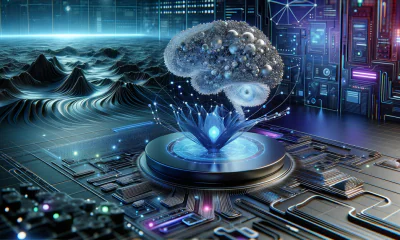Artificial Intelligence
AI Chatbots Grapple with Linguistic Understanding

The advent of artificial intelligence (AI) chatbots has reshaped conversational experiences, bringing forth advancements that seem to parallel human understanding and usage of language. These chatbots, fueled by substantial language models, are becoming adept at navigating the complexities of human interaction.
However, a recent study has brought to light the persistent vulnerability of these models in distinguishing natural language from nonsense. The investigation conducted by Columbia University researchers presents intriguing insights into the potential improvements in chatbot performance and human language processing.
The Inquiry into Language Models
The team elaborated on their research involving nine different language models subjected to numerous sentence pairs. The human participants in the study were asked to discern the more ‘natural’ sentence in each pair, reflecting everyday usage. The models were then evaluated based on whether their assessments resonated with human choices.
When the models were pitted against each other, the ones based on transformer neural networks exhibited superior performance compared to the simpler recurrent neural network models and statistical models. However, even the more sophisticated models demonstrated errors, often selecting sentences perceived as nonsensical by humans.
The Struggle with Nonsensical Sentences
Dr. Nikolaus Kriegeskorte, a principal investigator at Columbia's Zuckerman Institute, emphasized the relative success of large language models in capturing crucial aspects missed by simpler models. He noted, “That even the best models we studied still can be fooled by nonsense sentences shows that their computations are missing something about the way humans process language.”
A striking example from the study highlighted models like BERT misjudging the naturalness of sentences, contrasting with models like GPT-2, which aligned with human judgments. The prevailing imperfections in these models, as Christopher Baldassano, Ph.D., an assistant professor of psychology at Columbia noted, raise concerns regarding the reliance on AI systems in decision-making processes, calling attention to their apparent “blind spots” in labeling sentences.
Implications and Future Directions
The gaps in performance and the exploration of why some models excel more than others are areas of interest for Dr. Kriegeskorte. He believes that understanding these discrepancies can significantly propel progress in language models.
The study also opens avenues for exploring whether the mechanisms in AI chatbots can spark novel scientific inquiries, aiding neuroscientists in deciphering the human brain's intricacies.
Tal Golan, Ph.D., the paper's corresponding author, expressed interest in understanding human thought processes, considering the growing capabilities of AI tools in language processing. “Comparing their language understanding to ours gives us a new approach to thinking about how we think,” he commented.
The exploration of AI chatbots' linguistic capabilities has unveiled the lingering challenges in aligning their understanding with human cognition.
The continuous efforts to delve into these differences and the ensuing revelations are poised to not only enhance the efficacy of AI chatbots but also to unravel the myriad layers of human cognitive processes.
The juxtaposition of AI-driven language understanding and human cognition lays the foundation for multifaceted explorations, potentially reshaping perceptions and advancing knowledge in the interconnected realms of AI and neuroscience.














